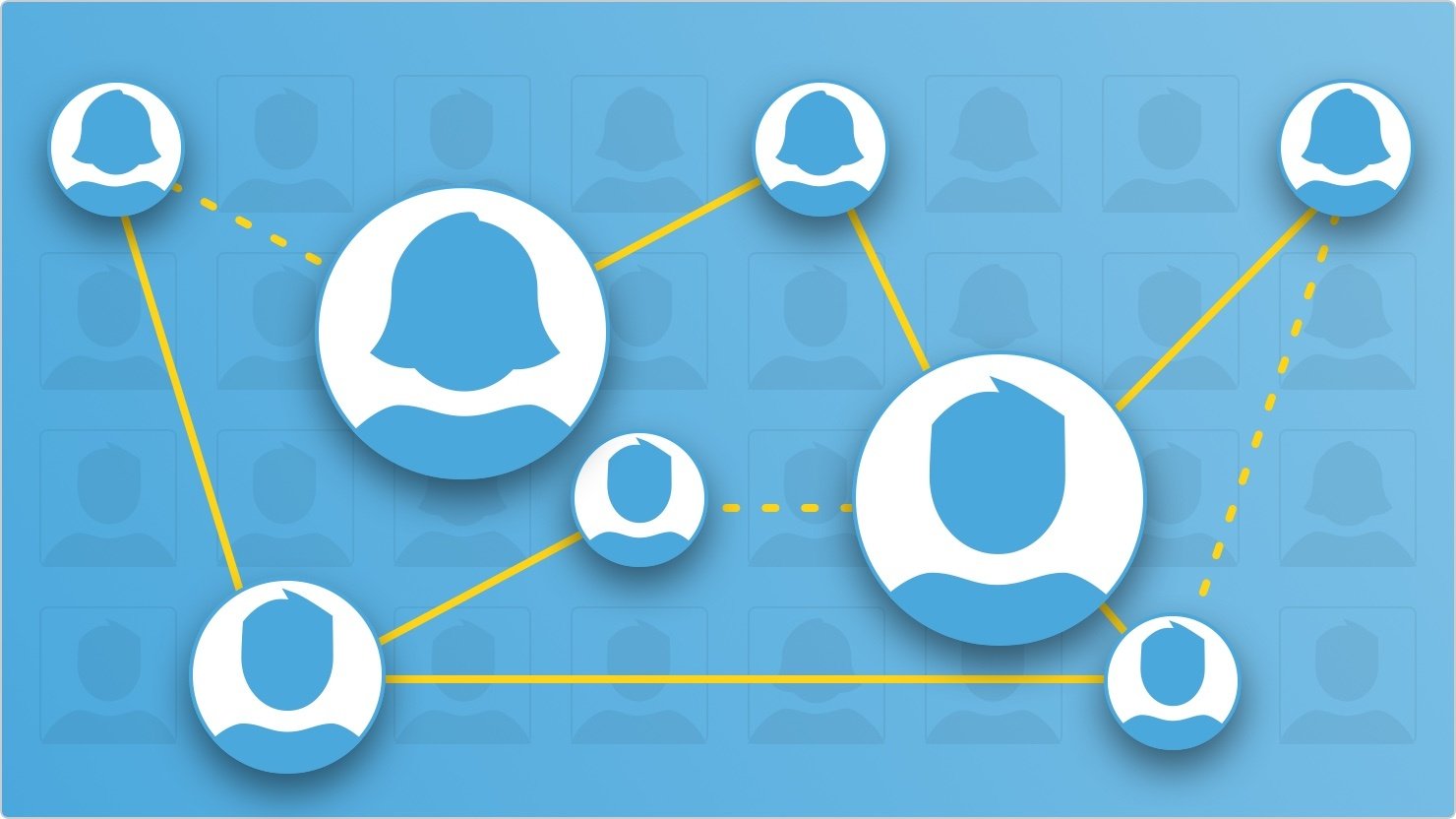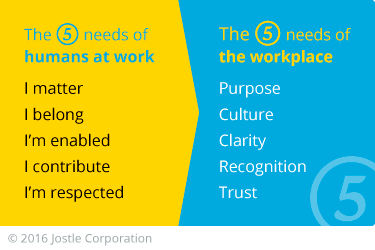
Much attention has been paid to engaging employees in recent years. And for good reason, given the shockingly low engagement levels reported study after study. And is anything really helping? Has the arrival of enterprise social network software platforms made any difference?
The truth is, employee engagement has not really improved for decades. Partly because there are some major shifts in technology and globalization well underway:
These realities make engagement more challenging, and although new tools have arrived, they haven’t really changed what it takes to engage an employee. But, the fundamentals remain the same – if you want to engage your employees, you need to actually focus on them and address their core workplace needs.
People are people. Employees bring the same set of human needs to work that they always have. At work, humans need to feel that they:
Your employee engagement strategy is all about addressing these five fundamental needs. That means that workplace leaders must be on a never-ending quest to:
These five things align directly with the needs of every individual at work. By consistently addressing these at every opportunity, leaders can shift workplace cultures and turn employee engagement around.

A connected organization develops and evolves their shared sense of purpose together over time. Effective leadership can refine, reinforce, and illuminate the meaning of the team’s mission by showing how it impacts decisions and the world in general. People know the work they do makes a difference, so they do their best. Real-time sharing of updates that connect progress to goals and the greater mission can help all team members stay focused and feel part of a greater team accomplishing something important.
Culture is the daily aggregation of interactions. Culture is how we treat one another; it’s the expectations we share about the way we get work done, or how and why we communicate and share ideas. It’s how we invest in one another and the world around us. The daily stories, challenges, and solutions you share as a company make everyone feel part of and define its culture. Empower your employees to share stories and anecdotes that contribute to your company’s culture. And encourage leaders to do the same.
Who works at your organization? What do they do? What resources, tools, and information are available? How does one get help? How does this all fit together into a big picture? Be deliberate and consistent in your efforts to help everyone maintain a clear view of what needs to be done, how to do it, and how it’s going.
Saying “thank you” is the simplest and most powerful way to show people that you appreciate their work. Doing it in public is even better. Find meaningful ways to recognize those who have made a difference, and do it often.
Trust happens when people value helping one another more than than outshining one another. It’s what happens when people are helpful, honest, and consistent. This starts with leadership. Great employee communications help leaders consistently demonstrate their commitment to trusted behaviors. Daily discourse is an excellent way to demonstrate the kind of behaviors you want in your organization and encourage others to do the same.
The right “digital workplace” platform can help a committed leadership team create an inspired organization. But this takes a clear vision and steadfast leadership, backed by relentless communication, recognition, and celebration at all levels of an organization to meet the aforementioned needs. Simply plunking in a shiny new software tool doesn’t move the engagement needle forward on its own.
Connect Wireless, who sells AT&T mobile phones and services across many parts of the US, is one example of a company driving its workplace culture with technology, making special efforts to connect and communicate with employees at all levels. During 2015, their average weekly employee participation on their social intranet was 98%. That’s particularly impressive when you consider they’re dispersed across over 70 locations. By focusing on the basic needs of their employees, and employing a modern intranet to achieve internal communication at all levels, Connect Wireless transformed itself into a hyper-connected and highly engaged workplace community.
At the end of the day, tools are just tools – they can make things easier but they don’t really change the job at hand. And the job at hand is engaging employees – meeting their human workplace needs in order to thrive and be most effective at work. That's the future of employee engagement. As for the tools, it’s simply how you use them that matters.
Read more by
Bev Attfield
Jostle’s employee success platform is where everyone connects, communicates, and celebrates at work. Find out more at jostle.me. © 2009–2025 Jostle Corporation. All rights reserved.